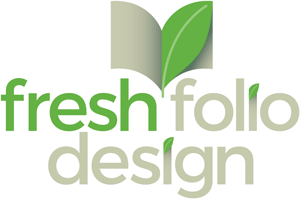In talking with other designers recently we were sharing about projects we were working on and commiserating about challenges that can arise while doing our jobs.
It became clear that a number of the challenges we each experienced had very little to do with the actual design work. This got me thinking about the additional skills, having nothing to do with design, that are important for a designer to possess.
I have seen how solid designers have enhanced their role within companies because they brought more to the table than just their ability to layout a magazine or create a strong logo.
Let’s go over 3 skills that enhance a designer’s effectiveness and give practical steps you can take to grow these skills.
ANALYTICAL
Design is problem solving through visual communication. However, in order to solve a problem, it helps to be able to take a step back and analyze the situation. Part of the balancing act of being a designer is having the passion of an artist, along with the ability to be impartial and detached in your process.
I remember a teacher in college saying, “You have to be willing to kill your children.” When I first heard that I thought that maybe it was time he switched to decaf, but once I started doing client work I began to understand what she was talking about.
As a creative, ideas are at the core of the work you do. At times you labor over them, refining them to make them as strong a solution as possible.
Good designers don’t get precious with their ideas. They are able to eliminate the ones that don’t solve the problem or are not serving the project.
They are also able to hear constructive criticism from others about where their idea is lacking.
This doesn’t mean that you just roll over and allow others to make design decisions for you. As the professional, you are responsible for the visual direction that a project takes. However, you need to be able to acknowledge when something isn’t working.
Rather than getting stuck and locking horns with someone, a good designer looks at this situation as another problem to solve and gets to work on finding a solution.
One way to grow this skill is to get around people who are more analytical. Observe how they handle situations or share with them a situation you are struggling with and ask how they would approach it.
It is also a good practice to acknowledge when you are struggling to detach in a project because that will happen at times. You don’t want to lose your artistic passion, but you want to be in control of it rather than the other way around.
Another way to grow this skill is to periodically do a self-assessment of your work. After completing some concepts, look at them as if it is someone else’s project.
What is working? Where is it lacking? How could it be improved?
If you don’t feel as if you could engage in an exercise like this, then the next option is to go through that process with another designer.
I have designer’s that I turn to when I’m struggling on a project and just can’t get outside of the perspective I am stuck on. The more that I invite trusted people into critiquing my work, the stronger I get at analyzing the work myself.
COMMUNICATION
Once you have fantastic ideas that solve the specific challenges of a project, you need to be present these ideas to a client or in-house team.
You can set yourself apart by possessing strong communication skills in order to articulate the ideas and the process behind developing a solution.
When I was first working as an entry-level designer at an ad agency, I would periodically be assigned to an art director to assist on a particular campaign or project.
At this agency, the art director was responsible for concepting and creating amazing graphics and, as a newbie, I really enjoyed seeing what they would come up with. My role would be to work in their files after the concept was approved and do revisions or minor edits along the way.
Each art director was talented regarding the design work they did, but when it came to talking about a concept and articulating ideas to the other team members, I could see how one of them was not as comfortable in this area and sometimes struggled with how he communicated.
As a result, other team members would dismiss him or work around him at times. Ultimately, when opportunities for promotion came up he was passed over.
Of course, there can be other factors that contribute to those dynamics, but I have seen how designers who are strong in communication get more of a voice within a team.
So what can you do to strengthen your communication skills?
First, I would recommend any time you are working on a project practice explaining your ideas out loud. Get in the habit of stating the problem you are solving and how you addressed that problem.
That practice alone has had a positive impact on my work, because there have been times when I thought I was solving the problem, however, when I actually talked through it I realized that I missed addressing a particular aspect.
Once you feel more comfortable, try sharing with friends or family who have no knowledge of the project you are working on. Or if you prefer, you can do this with a fellow co-worker.
It may feel awkward at first, but that’s to be expected when working on a skill. If you can push past that uncomfortable feeling, you can get to a place of comfortably receiving feedback from other’s.
How was your pacing? Too quick or too slow? Did they understand what you were saying? Excessive use of filler words? (ummm, like, ya know) What was their overall observation?
Now, of course, you can practice presenting and waive getting feedback at first. However, if you are practicing in order to get stronger at communicating, hearing what another person’s takeaway is will go a long way to help you strengthen this skill.
TIME MANAGEMENT
Another skill that is important for a designer to possess, but has nothing to do with design is time management.
This refer both to how you prioritize your tasks, as well as honing an awareness the amount of time you need to accomplish a task.
For some people managing their time well comes naturally. However, if you are someone who struggles with this, let’s take a look at a helpful tool called the “Eisenhower Box”.
This matrix was inspired by our 34thPresident, Dwight Eisenhower, who lived one of the most productive lives imaginable. His strategy for organizing tasks and taking action was simple. He placed each action into one of four catagories:
- Urgent and important (tasks you will do immediately)
- Important, but not urgent (tasks you will schedule to do later)
- Urgent, but not important (tasks you will delegate to someone)
- Neither urgent nor important (tasks you will eliminate)
The wonderful thing about this tool is that you can use it in large and small scope situations. For example, you can plan out what your focus will be for the next month, as well as using it to prioritize your plan for a single day.
 When applying this tool, I was amazed by how often I was doing activities that were “Urgent, but not important”, as well as “Not urgent or important.” It can be uncomfortable to lookout what is going on in those moments, but ultimately you will strengthen your productivity and most likely increase clarity on what you are doing.
When applying this tool, I was amazed by how often I was doing activities that were “Urgent, but not important”, as well as “Not urgent or important.” It can be uncomfortable to lookout what is going on in those moments, but ultimately you will strengthen your productivity and most likely increase clarity on what you are doing.
The second part of time management that is worth looking at is in estimating the time needed for the work you are doing.
When I first started doing my own design projects, I remember struggling with knowing how much time to allot for each step of the project.
In fact, when working on a project I would usually pull the dreaded all-nighter simply because I just didn’t have a sense of how much time was really needed. Now, I can plan out, with remarkably close accuracy, how long I need for most tasks that I do.
If you currently don’t have a sense of how much time you need when doing certain tasks, I would first recommend that you start documenting your time.
This doesn’t have to be cumbersome or time-intensive, just jot down the time you start a task and when you finish. As you do this more regularly, you will increase your awareness of the amount of time that various tasks take.
Once you have done this for a while, I would then recommend that you take that information and start creating estimates on how long you will take prior to doing a task.
When you are first practicing this, be aware of other factors that can influence the time needed. Were there distractions in your environment? Are there challenges that are unique to this particular task? Were you well-rested?
Remember, this isn’t information that you need to share with anyone else, it is all with an eye toward budgeting your time more effectively.
Eventually, if you document your time for tasks and then begin estimating your time, you will begin to acquire the ability to plan out the amount of time you need for each step of a project.
Of course, this is more of an art than a science and, even after doing this for many years, there are times when I’m off in what I estimate. But I am much closer to staying on task when I implement this intentional approach.
CONCLUSION
If you are wanting to step up your game as a designer, I encourage you to give some attention to growing these 3 skills (analytical, communication, time management). Maybe select just one to focus on over the next six months.
If you are not a designer yourself, but work with creatives, I would recommend that you keep these skills in mind when hiring or selecting a designer to work with.
I have seen how people with average ability in design, but with a solid foundation of these skills, make a positive impact on their project and team.




Leave a Reply